
Lavender is a beautiful and fragrant flower that finds a place in many very different gardens.
Lavender is, generally speaking, a rather easy and low maintenance plant to grow. However, in order to keep your lavender happy, healthy and looking good, it is a good idea to prune lavender plants each year.
Why Prune Lavender?
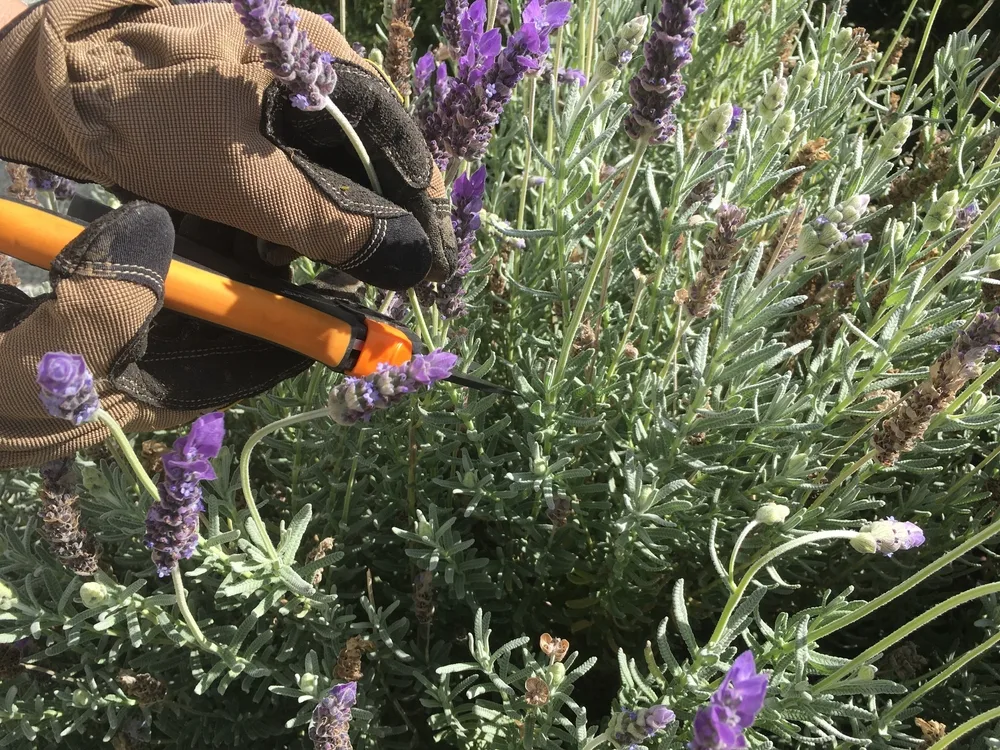
Pruning lavender is important because a lavender shrub that is left unpruned will become more woody more quickly. It can lose vigour and the woody stems can look straggly and unappealing.
What is more, the woody stems will be more prone to frost or water rot damage and disease, and can crack or break more easily.
Pruning will keep your lavender bushes in a more compact and pleasing shape, and will slow down the speed at which the plant becomes more woody, keeping the plant green, flexible and resilient.
If you have a lavender bush that has become woody and poor then it is best to replace it as lavender does not grow readily from old wood.
When To Prune Lavender
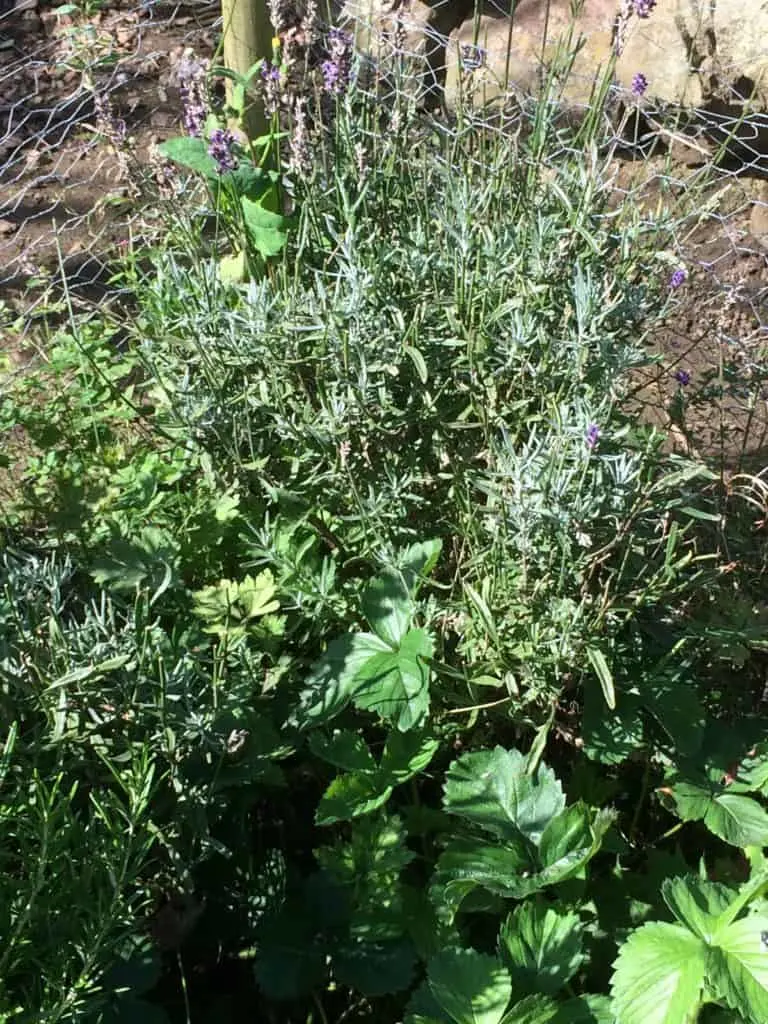
Lavender is a shrub that will do best if pruned every year.
If you want to prune lavender, this is a job to get on with in August, or early September, once the flowers are finished for the season.
You may well already have taken many of the flowering stems off the plants to use for a variety of different purposes around your home (such as these brilliant ideas from Tracey), and so will likely have already done some pruning as you have gone along.
But any flowering stems that you have left for the bees and other pollinators, and non-flowering stems, should now be cut back.
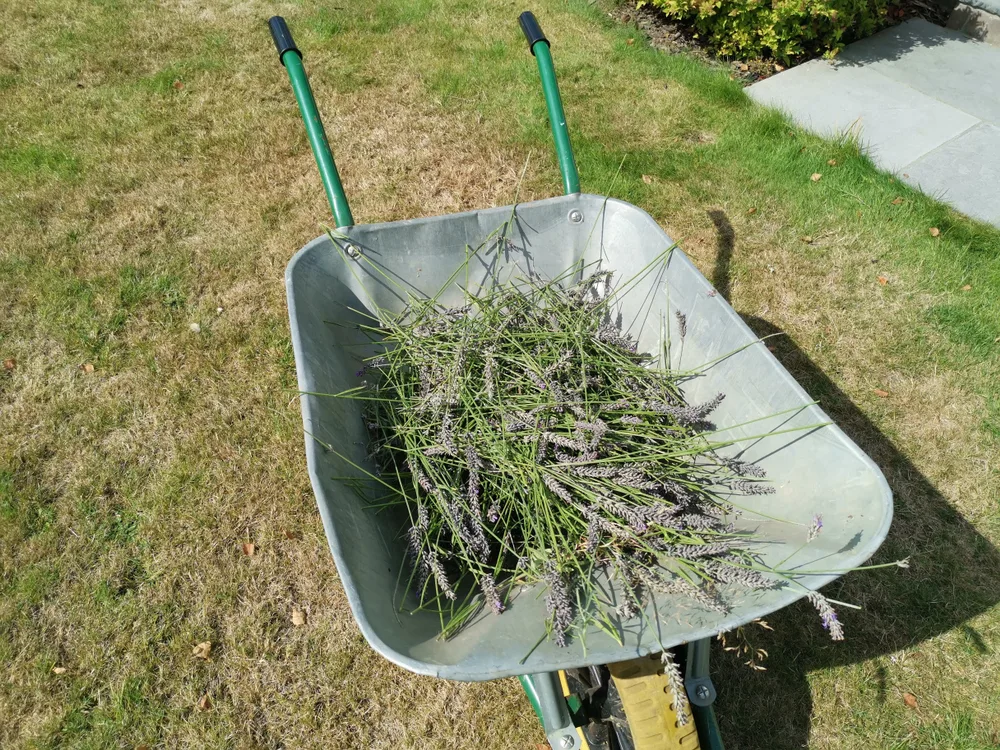
Lavender is usually pruned after flowering in the late summer, though some books will also recommend pruning in the spring.
Spring pruning is usually a light trim that is undertaken in order to remove any foliage that is frost damaged or untidy after winter. This may not be necessary, though it can help to keep plants healthy and full.
If the flowers on your lavender plants have lost their colour, then it is a good time to prune. The bees will no longer be visiting the flowers, and they will be gray and dry.
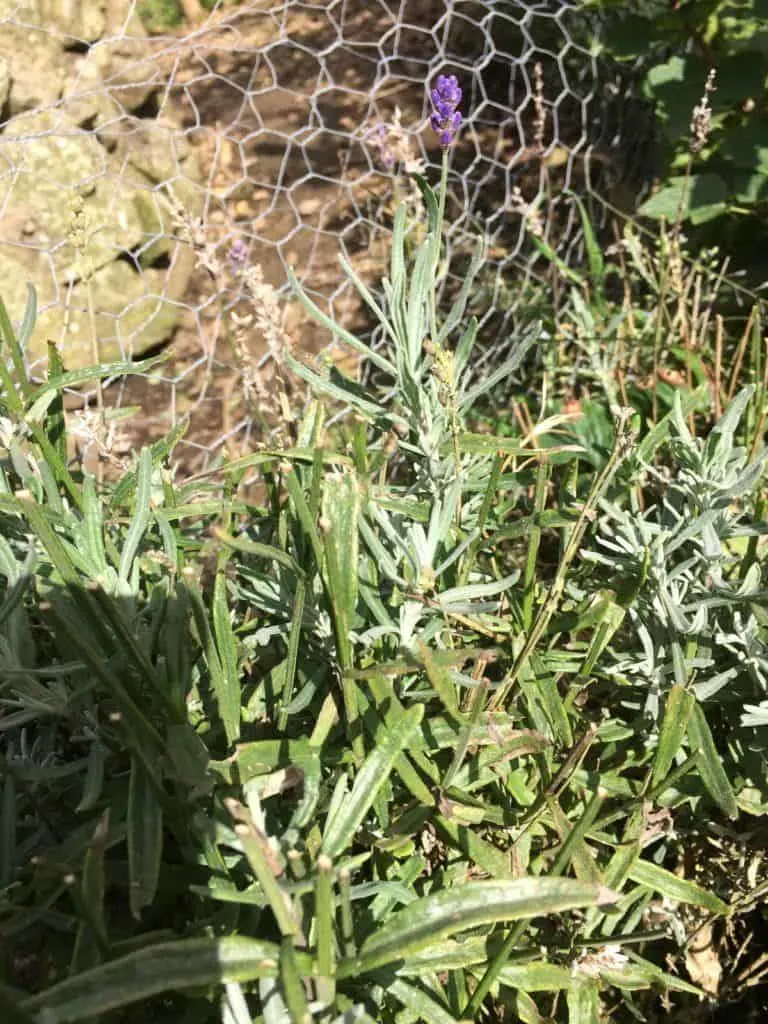
(If you do find that there are still a few flower head that are purple and visited by bees, then you could consider leaving these so that the pollinators still have access to them as the nights begin to draw in.)
Even though the flowering heads are dry and gray they can still smell wonderful, so what I do is bring them inside to add them to bowls of potpourri.
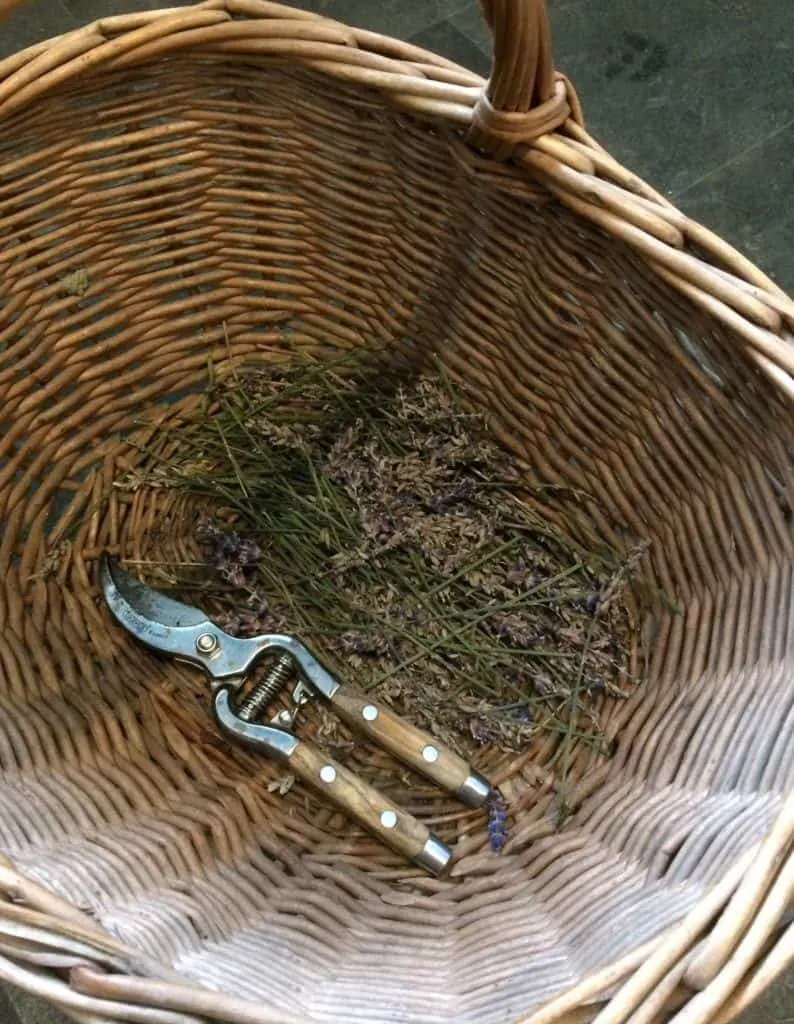
How Much Should You Take Off Your Plants?
Pruners should be used to remove the flower heads and cut back this years growth, making sure that some new green growth remains. Do not be too frightened to cut back your lavender, especially if it is the English variety.
Give it a good haircut each year and your plants will look good and remain healthy for much longer than if you are too tentative.
You can remove most of the new, green growth, so long as you cut above the small buds and green shoots that are forming on the lower woody material. However, generally speaking, people will remove the flowering stems and around 2.5cm of the length of the leafy growth, which will encourage it to grow back bushy and full.
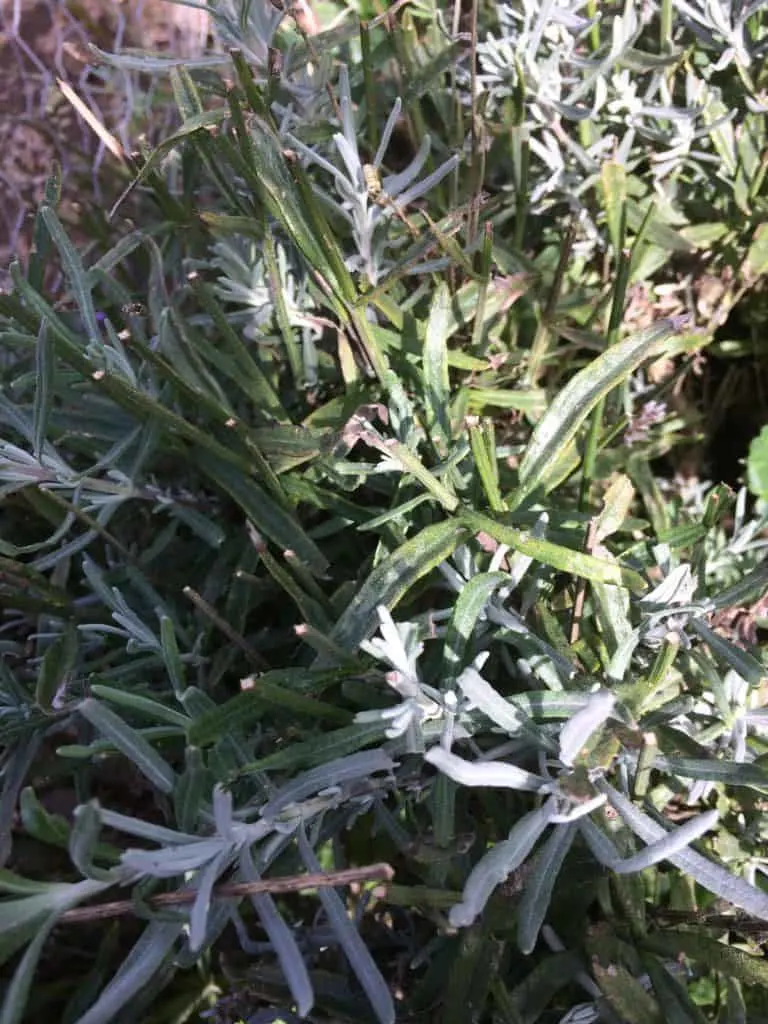
Considering Aesthetics When Pruning Lavender Plants
Since I want my lavender to grow a little bit bigger, to fill in this space in the sunny fringe of the forest garden, and want a wilder and more natural look, I am leaving my lavender a little less pruned than you might if you were making a neat edging in a formal border.
The important thing is simply to make sure that you do not cut right down to old wood, as if you do, the lavender may not readily re-grow.
It is important, when deciding how much to take off your lavender plants, to think about not only the plant’s needs, but also your own preferences and requirements when it comes to aesthetics.
Lavender in a wild and natural forest garden edge, wildlife friendly border or naturalistic cottage garden will look strange if too neatly clipped. In a more formal or contemporary garden design, however, lavender will look better if you keep it very neat and orderly in appearance. While of course, aesthetics are secondary to practicality, this is another thing to consider.
Propagating Lavender By Layering Longer Branches
Another thing to think about when pruning your lavender is whether or not you intend to propagate the plants through layering.
Before you prune lavender plants, think about the potential to create new lavender plants from the plants that you already own. One way to do so without the hassle of taking cuttings is to layer them.
Layering is a technique which basically involves:
- Taking a low, woody branch of your lavender plant.
- Cutting a shallow notch in that branch.
- Bending the branch downwards, pressing that notch to the ground and making sure that it stays there, covered in soil.
- Using a peg, or a heavy rock to hold the branch down.
- Waiting for roots to form. (Using rooting compound increases the chances of success, but is not essential to the process.)
Considering branches that might be used for this purpose is a good idea before you prune, as logistics may mean that you need to keep these branches a little longer in order to accomplish your aims.
Pruning lavender is a relatively straightforward process, as long as you keep plant health and requirements, aesthetic and practical considerations in mind.
As long as you keep these things in mind, and do not prune right back to old woody growth, then it will be difficult to go too far wrong and your lavender plants will remain full, bushy and healthy for many years to come.
Read Next: 15 Herbs You Can Propagate From Cuttings

Get the famous Rural Sprout newsletter delivered to your inbox.
Including Sunday ramblings from our editor, Tracey, as well as “What’s Up Wednesday” our roundup of what’s in season and new article updates and alerts.

